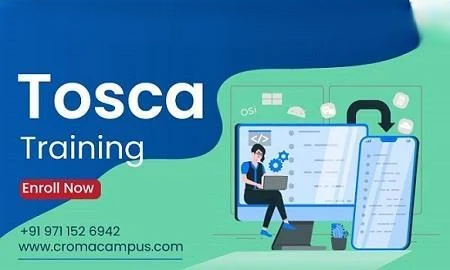Well, in software testing, it is very important to ascertain the quality and performance of the applications. The two well-known testing tools, Tosca and JMeter, can be combined to offer a complete solution to testing. Tosca is a functional test tool or one through which software applications can be tested automatically, whereas JMeter is a load testing tool where one simulates the usage of a load of users to check how the application performs under a load.
Benefits of Integrating Tosca and JMeter
With the combination of Tosca and JMeter, you can be able to change the face of your test cycle, thus guaranteeing that your application has been tested extensively in regard to functionality and performance.
This potent tandem is helpful to carry out overall testing, early-stage defect discovery, and better test-time savings. By adopting the preference of Tosca and JMeter, one will be better able to understand the quality and performance of his/her application. To further know about it, one can visit the Tosca Online Course. Here are some significant benefits of integrating Tosca and JMeter.
Functional and load testing:
Tosca combined with JMeter allows both functional and performance-related testing of your application. Thus making your application well checked as to functionality and load.
Unit-level defect detection:
Tosca can find bugs at the unit level in the development cycle, and JMeter can detect performance bugs before the situation escalates.
Enhanced Test Efficiency:
Using Tosca and JMeter, one can automate the entire process, which saves time and effort spent on testing.
Increased Test Coverage:
Functional testing and load testing are two different approaches to testing the application. Thus giving a better picture of the behaviour of the application and its quality.
How to Integrate Tosca and JMeter?
The combination of Tosca and JMeter comes with ease and leads to infinite testing opportunities. The combination of these two tools enables you to come up with a complete testing mechanism for both functional and performance testing.
A couple of configurations can allow Tosca and JMeter to be used together to execute synchronized tests. The integration allows testing the functionality and dynamics of your application in parallel. Many institutes provide Tosca Certification training, and enrolling in them can help you start a career in this domain. There are some steps needed to integrate Tosca and JMeter:
- Make a Tosca Test Case: Make a Tosca test that provides coverage of the functionality of your application.
- Set up a JMeter Test Plan: You need to set up a test in JMeter that would generate many users accessing your application.
- Combine Tosca and JMeter: Toscas API or command-line integration: Tosca integration – use the API or command-line interface of Tosca to integrate it with JMeter. This will be achieved by writing a script that invokes JMeter API to execute a test plan in a bid Tosca is executing its test case.
- Run the Integrated Test: Run the integrated test. This test will run the functional test case in Tosca and the load test plan in JMeter.
- Analyse the Results: Use the results of the test, which will give you information on the functionality as well as the performance of your application.
Best Practices for Integrating Tosca and JMeter
The best practices will maximize the benefits of integrating Tosca and JMeter to guarantee smooth testing and best outcomes. You will be able to optimize your testing process by using CI/CD pipelines and test data management frameworks, as well as paying close attention to the results of the tests.
Test scripts are to be optimized; they have to be efficient and effective. Paying the Tosca Certification Cost can be a very valuable investment for your future. Using this method, you will be able to enjoy the fruits of integrated testing.
- Apply CI/CD Pipeline: Tosca and JMeter should be combined with your CI/CD pipeline to automate the testing procedure and use it to conduct tests regularly.
- A test data management framework: Deploy a test data management framework to control test data and make sure that it is the same between functional and load testing.
- Monitor Test Results: Test results should be monitored by people for potential defects and performance problems early on in the development life cycle.
- Optimise Test scripts: Optimize your test scripts so that these are efficient and effective.
Conclusion
Combining both Tosca and JMeter gives an end-to-end testing environment that may be used to assure the quality and performance of software applications. With the help of the measures suggested in the given article and best practices, you will be able to thoroughly combine the two tools and make the testing process more efficient and effective.
Many institutes provide JMeter Online Course, and enrolling in them can help you start a career in this domain. It should be noted that there exist difficulties and limitations, but the advantages of combining Tosca and JMeter prove it to be an effective investment for organizations needing to enhance their testing opportunities.
